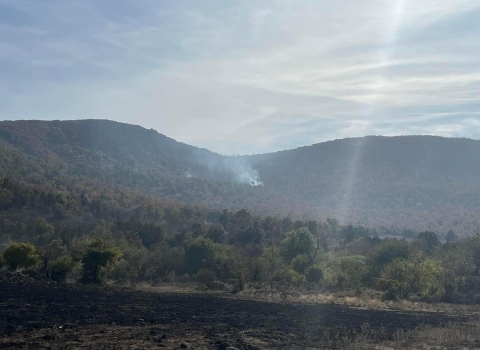Last week a large winter storm known as a "bomb cyclone" brought snow, wind and rain to the central plains. One hard hit area was the State of Nebraska where run off and rising stream and rivers are flooding many parts of the Cornhusker State. Despite the challenges these flood waters have created for communities and citizens, employees of the U.S. Fish and Wildlife Service, Rainwater Basin Wetland Management District (WMD) have found a way to help their neighbors. WMD staff have been assisting two neighboring ranchers with emergency grazing opportunities since March 14th when rising water flooded adjacent agricultural fields used for winter pasture, leaving mud too deep for cattle to walk through. To make matters worse, this was right in the middle of the peak spring calving season. With ranchers losing cows and calves and unable to access their fields, the WMD offered a helping hand and over 400 animals were moved onto adjacent waterfowl production areas where higher ground and ample food sources helped ranchers maintain their herds and the economic livelihood of the community.
“The economy in Nebraska depends on Cattle,” said Brad Krohn, project leader for the Rainwater Basin Waterfowl Management District. ‘This is our community and allowing adjacent landowners to use district lands is a way we could help our neighbors and protect the cattle they depend on.”
The water is expected to recede over the next few weeks enabling the lands to dry out and allowing the newborn calves and their mothers to return home.”
Cattle are not new to the WMD. At different times of the year grazing is used to maintain a healthy grasslands and wetlands. Cattle mimic the historic forging of other herbivores like deer and Bison and play an important role in keeping grasslands in an early successional stage and sustains the nutrient cycle used by other wildlife.
The Rainwater Basin, is a complex of wetlands scattered throughout a 21-county area in south-central Nebraska. The wetlands are shallow basins that provide resting and feeding areas for millions on birds during spring and fall migration.
The mission of the U.S. Fish and Wildlife Service is working with others to conserve, protect, and enhance fish, wildlife, plants, and their habitats for the continuing benefit of the American people. For more information on our work and the people who make it happen in the West, connect with us on Instagram and Facebook, follow us on Twitter, watch our YouTube channel at and download public domain photos from Flickr.



